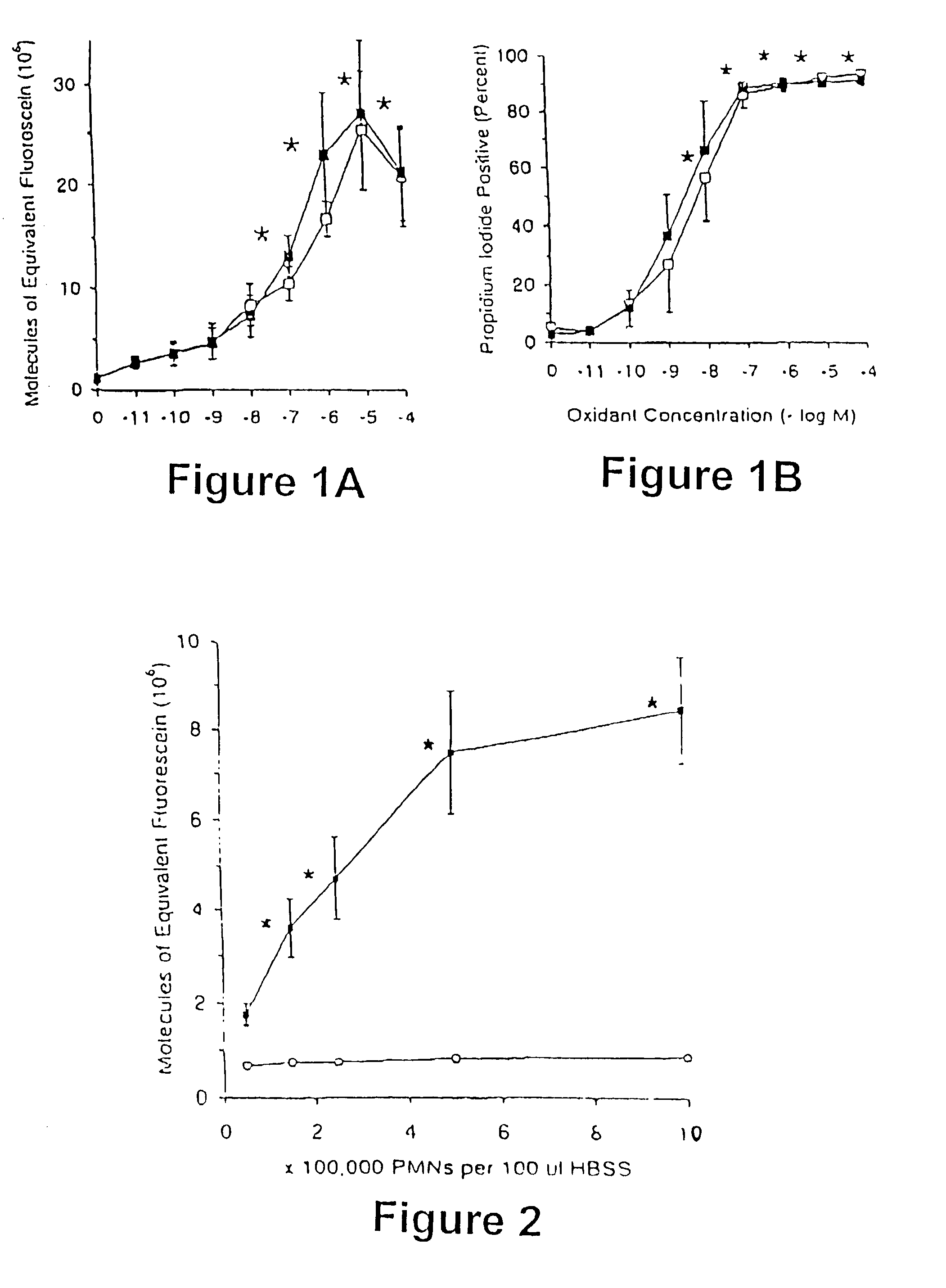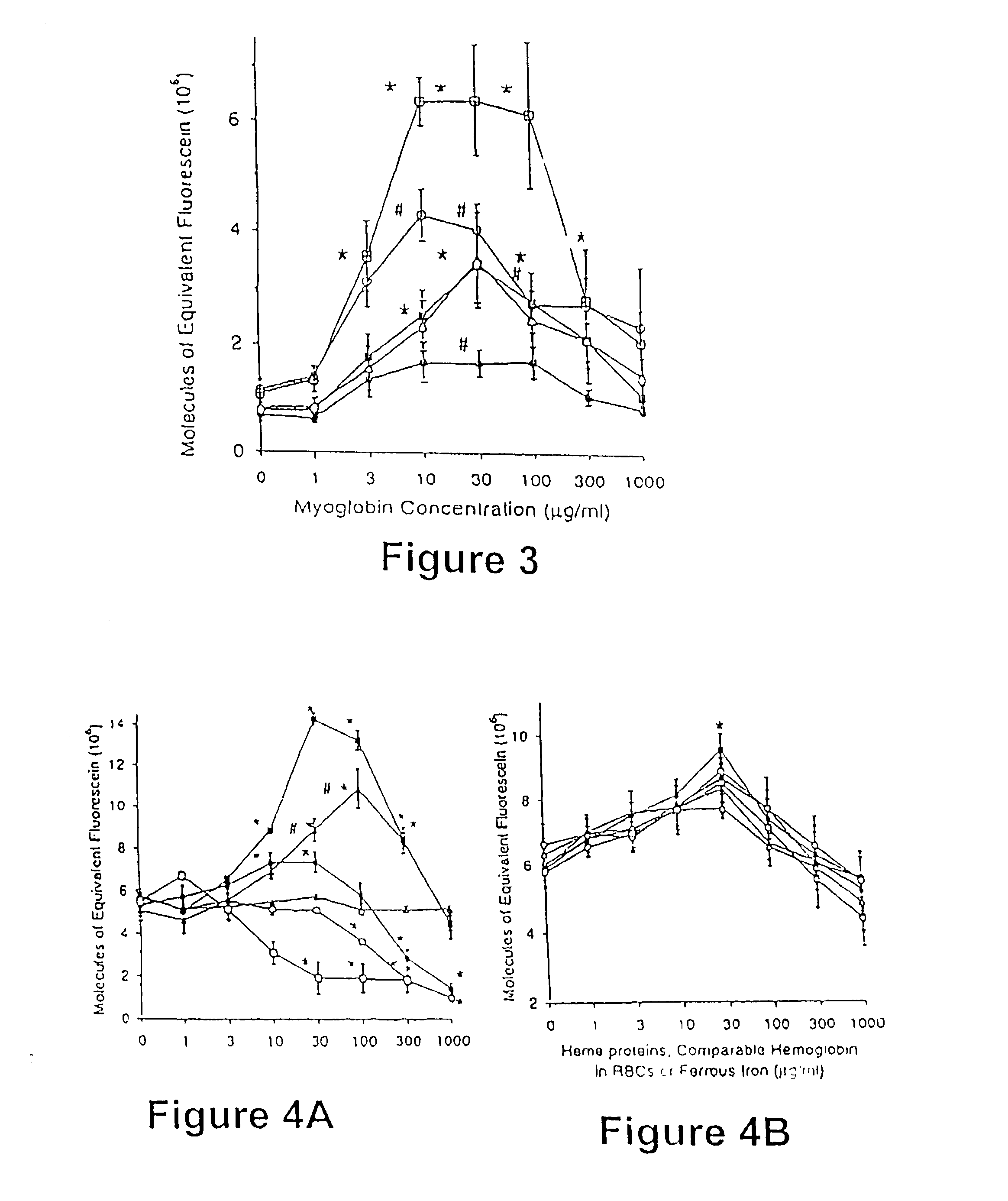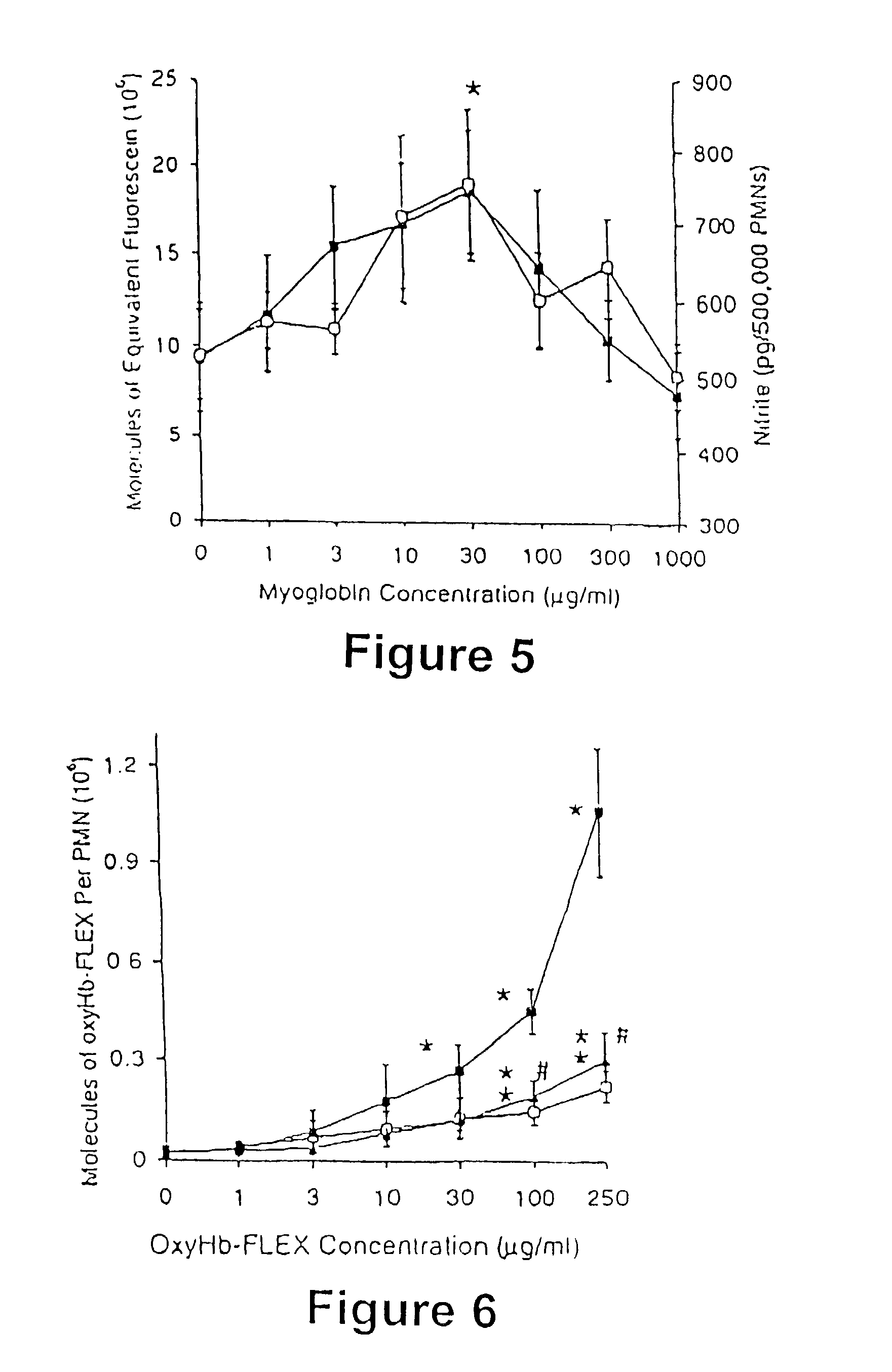Rapid screening procedure for inflammation mediators
a screening procedure and inflammation mediator technology, applied in the field of rapid screening procedure of inflammation mediators, can solve the problems of toxic effects, potential adverse effects of cell free oxyhb substitutes, patients with activated immune systems,
- Summary
- Abstract
- Description
- Claims
- Application Information
AI Technical Summary
Benefits of technology
Problems solved by technology
Method used
Image
Examples
example 1
PMNs and Lymphocyte Isolation
[0063] All reagents, unless otherwise specified, were obtained from Sigma Chemical Co. (St. Louis, Mo). Human PMNs and lymphocytes were obtained from EDTA-preserved venous blood of non-smoking adult males by layering blood over Polymorphprep, Nycomed Pharma As (Oslo, Norway). Blood was centrifuged at 550 g for 30 min at 22.degree. C., and the PMN and lymphocyte layers were collected and washed twice in Hanks' balanced salt solution (HBSS) Gibco (Grand Island, N.Y.). All PMNs were incubated with physiological levels (10.sup.-4 M) of arginine unless otherwise stated. One or two hypotonic lyses were performed to lower the red blood cells to .ltoreq.1% of PMNs or of lymphocytes. RBC ghosts lying on top of the PMNs were removed after the first hypotonic lyse by pipette extraction. The purity of PMNs and lymphocytes was greater than 88% and 95%, respectively, and their viability as determined by trypan blue-uptake was greater than 90%. All experiments were con...
example 2
Effect of NO. or H.sub.2O.sub.2 Concentration or PMN Density on DCFH Oxidation
[0064] PMNs were incubated with 2,7-dichlorodihydrofluorescein diacetate (DCFH-DA; (2 .mu.M; from Kodak, Rochester, N.Y.) at 37.degree. C. for 15 minutes. DCFH-DA permeated the cells freely and was trapped after enzymatic hydrolysis of the diacetate to DCFH. Oxidation of DCFH resulted in the fluorescent DCF. To assess the use of DCFH-DA in measuring intracellular levels of NO and / or H.sub.2O.sub.2, a NO. donor, diethylamine nitric oxide (DEANO; Molecular Probes, Eugene, Oreg.) or hydrogen peroxide (H.sub.2O.sub.2), at concentrations of (10.sup.-11 to 5.times.10.sup.-4 M) were incubated with DCFH-loaded PMNs at 37.degree. C. for 30 min. Concentrations of DEANO-derived NO. were generated by rapidly performing an initial 10-fold serial dilution of a concentrated (10.sup.-2 M), alkali (1 mM NaOH) stock into HBSS buffer followed by a 10 fold dilution into the PMN preparations. Intracellular levels of propidium ...
example 3
Heme Protein Effect on DCFH Oxidation in Unstimulated, Lipopolysaccharide (LPS) and Tumor Necrosis Factor .alpha. (TNF.alpha.)-, and PMA-stimulated PMNs
[0066] DCFH-loaded PMNs were incubated with and without N-methyl-L-arginine (L-NMMA; 5 mM; Calbiochem, San Diego, Calif.) and heme proteins (0.3-1000 .mu.g / mL) at 37 .degree. C. for 10 minutes. The L-NMMA-treated PMNs were subsequently incubated for an additional 30 min in the absence or presence of LPS (10 ng / mL), LPS (10 ng / mL) and TNF.alpha. (1 ng / mL), or PMA (200 nM). In unstimulated and LPS and TNF.alpha. -stimulated PMNs, the treatments were oxyMb, or oxyMb+L-NMMA (5 mM). In PMA-stimulated PMNs with arginine, the treatments were oxyMb, oxyHb, bilirubin, ferrous chloride or either isolated RBCs or sonicated RBCs containing comparable amounts of oxyHb. RBC cell membranes were ruptured using a micro-ultrasonic cell disrupter, Kontes, Janke and Kukel Gmbh and CO. (Stauten, Germany). In PMA-stimulated PMNs without arginine, the trea...
PUM
 Login to View More
Login to View More Abstract
Description
Claims
Application Information
 Login to View More
Login to View More - R&D
- Intellectual Property
- Life Sciences
- Materials
- Tech Scout
- Unparalleled Data Quality
- Higher Quality Content
- 60% Fewer Hallucinations
Browse by: Latest US Patents, China's latest patents, Technical Efficacy Thesaurus, Application Domain, Technology Topic, Popular Technical Reports.
© 2025 PatSnap. All rights reserved.Legal|Privacy policy|Modern Slavery Act Transparency Statement|Sitemap|About US| Contact US: help@patsnap.com



